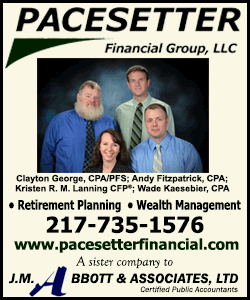|
Fed leaves rates unchanged, says risks to
outlook reduced
 Send a link to a friend
Send a link to a friend
 [July 28, 2016]
By Lindsay Dunsmuir and Howard Schneider [July 28, 2016]
By Lindsay Dunsmuir and Howard Schneider
WASHINGTON (Reuters) - The Federal Reserve
left interest rates unchanged on Wednesday but said near-term risks to
the U.S. economic outlook had diminished, opening the door to a
resumption of monetary policy tightening this year.
The U.S. central bank said the economy had expanded at a moderate rate
and job gains were strong in June. It added that household spending also
had been "growing strongly," and pointed to an increase in labor
utilization.
While Fed policymakers said they continued to closely monitor inflation
data and global economic and financial developments, they indicated less
worry about possible shocks that could push the economy off course.
"Near-term risks to the economic outlook have diminished," the Fed's
policy-setting committee said in its statement following a two-day
meeting in which it left its benchmark overnight interest rate in a
range of 0.25 percent to 0.50 percent.
The Fed noted, however, that inflation expectations were on balance
little changed in recent months, and gave no firm indication of whether
it would raise rates at its next policy meeting in September.
Most Fed policymakers had urged caution in raising rates until there was
concrete progress in moving inflation toward the central bank's 2
percent target

"It's a little bit more hawkish, but not much," said Walter Todd, chief
investment officer at Greenwood Capital Associates in South Carolina.
The Fed's preferred inflation rate currently stands at 1.6 percent and
has been below target for more than four years.
U.S. Treasury prices pared gains after the Fed's decision, while the
U.S. dollar briefly strengthened against the euro and yen. U.S. stocks
extended declines before later reversing course to trade largely flat in
the session.
Federal funds futures implied traders still see roughly even odds of a
rate increase at the Fed's December meeting and about a 20 percent
chance of such a move in September, a bit lower than before the
decision, according to CME's FedWatch Group.
The policy-setting committee will also meet at the beginning of
November, but a rate hike at that time is generally seen as unlikely
because it would occur a week before the U.S. presidential election.
A Reuters poll of economists suggested the Fed is most likely to wait
until December to raise rates.
"There wasn't any tip that the Fed will raise rates in September," said
Mike Materasso, co-chair of Franklin Templeton's fixed income policy
committee in New York. "A rate increase is warranted this year, most
likely at the end of the year, but a lot has to do with a benign world
arena."
Kansas City Fed President Esther George was the only policymaker to
dissent at this week's meeting. She has favored raising rates at three
of the last four meetings.
[to top of second column] |

The Federal Reserve Building stands in Washington April 3, 2012.
REUTERS/Joshua Roberts/File Photo

FOCUS ON DATA, YELLEN
The Fed has held steady on rates since December, when it raised them
for the first time in nearly a decade and signaled another four rate
increases were in the offing for 2016.
That was scaled back to two hikes this year after central bank
policymakers issued new projections in which they also lowered their
longer-term growth estimates for the U.S. economy.
A global economic slowdown, financial market volatility and
uncertainty over the impact of Britain's June vote to leave the
European Union have repeatedly forced the Fed to delay another rate
increase.
The U.S. economy, however, has suffered little initial impact from
the so-called 'Brexit' vote. A string of better-than-expected
economic data recently as well as an easing in financial conditions
also have calmed nerves.
Fed officials will now turn their attention to this Friday's first
initial estimate of U.S. gross domestic product for the second
quarter, which is expected to show a healthy rebound from the
previous quarter.
The economy likely expanded at a 2.3 percent annualized rate during
the second quarter, according to the Atlanta Federal Reserve's
latest forecast.
The closely-watched U.S. monthly employment report will be issued on
Aug. 5, followed three weeks later by a speech from Fed Chair Janet
Yellen at the annual central banking conference in Jackson Hole,
Wyoming.

Fed policymakers have used the conference to give major steers on
central bank policy.
(Reporting by Lindsay Dunsmuir, Howard Schneider and David Chance;
Additional reporting by Lewis Krauskopf in New York; Editing by Paul
Simao)
[© 2016 Thomson Reuters. All rights
reserved.]
Copyright 2016 Reuters. All rights reserved. This material may not be published,
broadcast, rewritten or redistributed. |